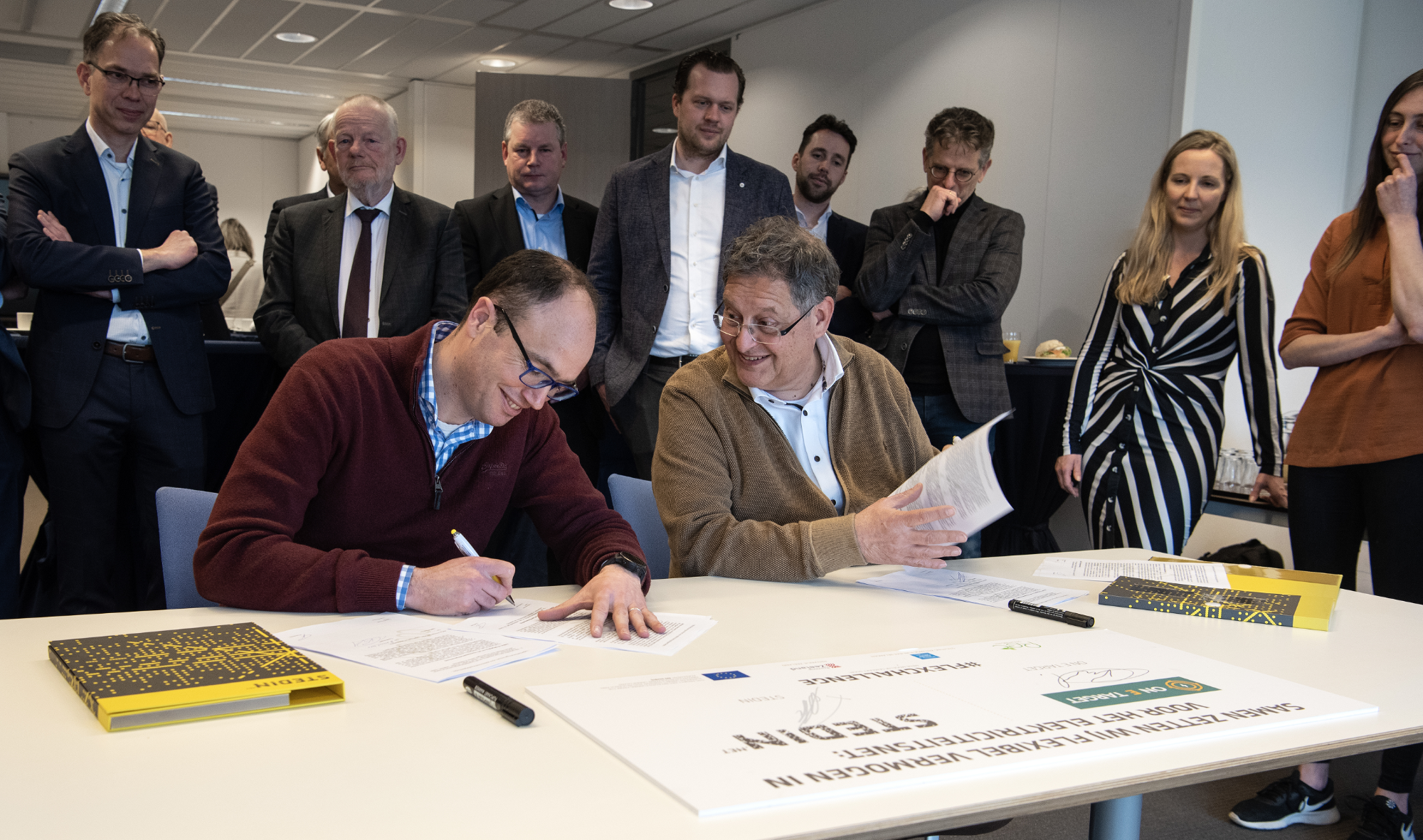Behavioural solutions
Apart from technical and flexible solutions, the key to flexibility in the energy system largely lies in our own behaviour. We must learn to deal with a sustainable energy system. This means using renewable energy when it is available (see ‘Solarette’ box), using smart solutions and reducing energy consumption when less of it is available. In this way, we avoid having to make unnecessarily large grid expansions only to accommodate sporadic large peaks.
Grid-aware charging
By the end of 2023, there were nearly half a million charging points in the Netherlands. Around two thirds of the charging points in our service area are on-street charging points. If all electric cars are being charged at peak times – between 16:00 and 21:00 hours – the electricity grid is at risk of being overloaded. On-street charging points charge cars using a capacity of at maximum 11 kilowatts (kW). This is comparable to the capacity of ten single-family houses using electricity at the same time. Together with the municipality of Utrecht, we examined the impact if cars were to be charged using a capacity of at maximum of 4 kW instead of 11. This should significantly reduce the burden on the cable in the street.
Grid-aware charging creates slightly more room on the grid, but even more room can be freed up by switching off most on-street charging points completely between 16:00 and 21:00 hours. For every charging point switched off in the evening peak, Stedin can connect roughly one more home. An earlier study by research institute Elaad showed that almost half of all charging actions start during these peak hours. Charging cars around dinner time is by no means necessary for everyone. It can also be done at other times of the day, such as when solar power is plentiful.
Smart charging
Over the past 2.5 years, local grid managers, companies and knowledge institutions applied ‘smart charging’ based on flexible grid tariffs at 380 public charging points via the FLEET collaboration project. Electric cars were charged outside peak times on the electricity grid in order to avoid grid problems. The result? Smart design of this system reduces problems on the electricity grid by around 20%. In most cases, charging point users did not notice any difference.
During the trial, it was found that some electric car models unfortunately did not respond well to charging breaks during peak times. This means charging of these cars cannot simply be delayed, but must continue at a particular charging current to avoid charging problems. Charging points can recognise these cars and make adjustments, but it makes ‘smart charging’ less effective. Therefore, further research is now being conducted into what adjustments are needed to make all cars respond optimally, for example through standardised charging protocols.
Grid managers at national level have already decided to introduce an intermediate version of ‘smart charging’, known as ‘grid-aware charging’. In this process, charging is ‘throttled’ rather than interrupted. However, ‘smart charging’ is being developed further on a regional scale.
In the coming years, we want to implement ‘grid-aware charging’ across our service area. We are asking municipalities to include ‘grid-aware charging’ in new agreements for public charging points. As regards existing agreements, we are going to discuss the application of ‘grid-aware charging’.
Scaling up congestion management
Unfortunately, we are increasingly coming up against the limits of our grid. In 2023, we therefore gave priority to setting up and scaling up solid processes for the implementation of congestion management, including appropriate IT support. The first results are now visible, such as in terms of drawing up flex contracts, supporting the Network Operations Centre in carrying out grid safety analyses and deploying flexible capacity, setting up waiting list management, and centrally recording and sharing information on congestion areas.

What have we learnt about utilisation?
By keeping in touch with heavy-use customers and municipalities, and having a good understanding of the state of our grids, we can anticipate at an earlier stage where congestion might occur. This allows us to proactively engage with customers and try to steer decision-making in order to prevent or congestion or delay its occurrence. However, as particularly customer requests from small businesses and consumers are difficult to predict, we don’t always have a clear understanding of potential risk areas and congestion areas. We will continue to work on this in 2024.
We will need to further scale up technical, flexibility and behavioural solutions. By the end of 2023, we had contracted 52 MW in flexible capacity. This means we achieved our target. However, we realise that we need an increasing amount of flexible capacity, which is why we have substantially raised the target for next year, to 500 MW. Further scaling up solutions is a key task for 2024.
Finally, we have learnt to act and communicate more quickly and proactively about risk areas and congestion areas. Clear (external) communications are essential in order to reach solutions with our stakeholders aimed at utilising our grid as best as possible.
